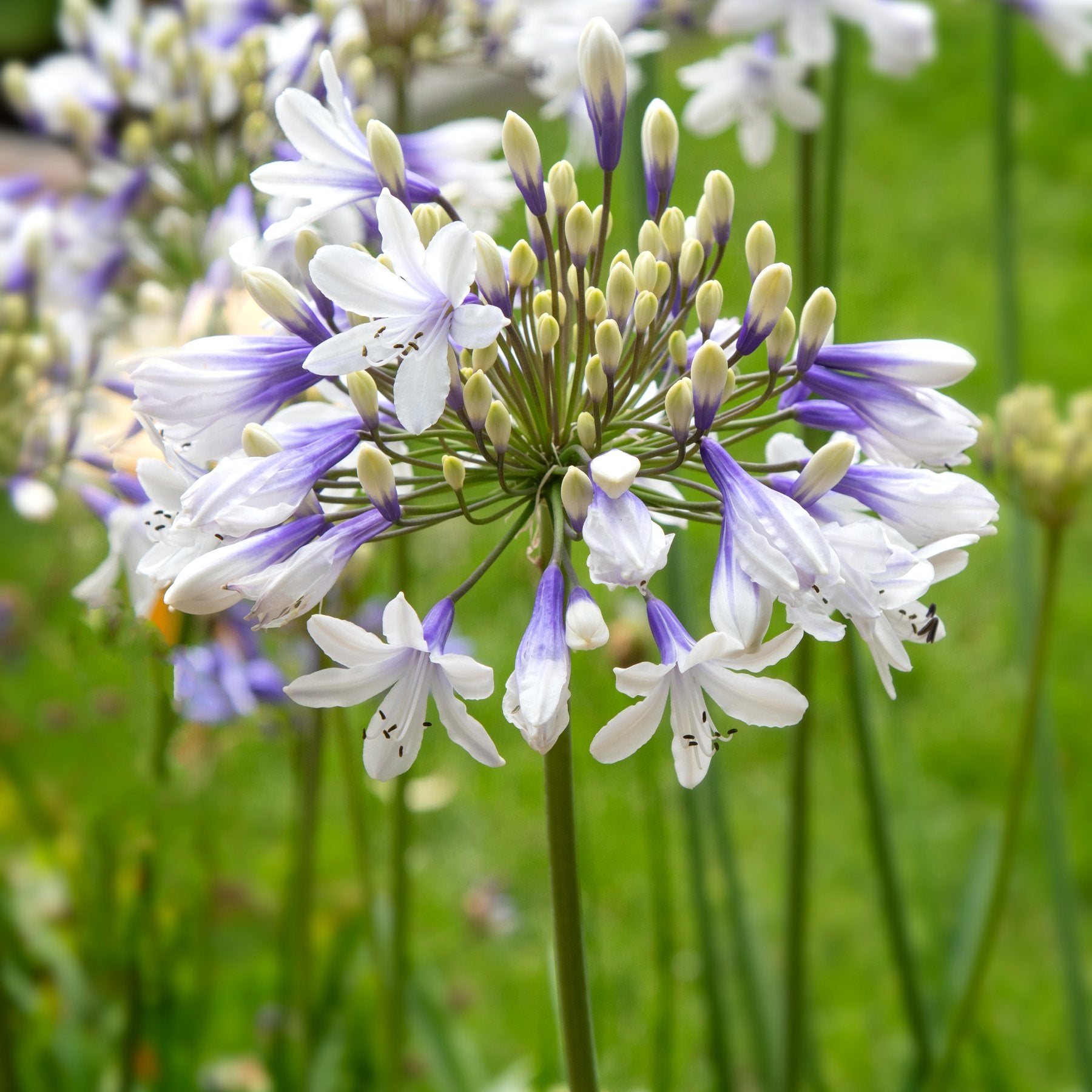Growing Agapanthus: A Full Guide to Beautiful Blooms
Growing Agapanthus: A Full Guide to Beautiful Blooms
Blog Article
Letting Loose the Secret to Successful Agapanthus Farming: Advice for a Flourishing Garden
In the world of gardening, growing agapanthus successfully calls for a critical technique that encompasses numerous facets of plant treatment. With careful focus to detail, one can open the secrets to supporting these sensational blooms, bring about a garden that prospers with charm and vibrancy. By recognizing the nuances of agapanthus growing, one can develop an atmosphere where these plants grow and bloom perfectly. In the following discussion, we will certainly explore necessary tips and methods that will assist you in the direction of a thriving agapanthus garden, using understandings into ideal practices, dirt conditions, watering methods, and extra.
Growing Agapanthus: Ideal Practices
When planting Agapanthus, proper soil preparation is necessary for ensuring successful growth and development of these stunning blossoms. Agapanthus, generally called Lily of the Nile or African lily, grows in well-draining soil with a slightly acidic to neutral pH level - Agapanthus. Before planting, it is critical to amend hefty clay soils with raw material such as garden compost or peat moss to boost drainage and provide important nutrients for the plants
To plant Agapanthus, choose a location that receives full sunlight to partial color, as this will certainly advertise healthy and balanced development and bountiful blooming. Dig an opening twice the size of the plant's origin sphere and position the Agapanthus at the same depth it was previously growing. Delicately backfill the opening with dirt, weighing down securely to eliminate any type of air pockets around the roots.
Water the newly grown Agapanthus extensively and remain to maintain the soil evenly moist, especially during the plant's energetic growing season. Agapanthus. Using a well balanced plant food once a month can additionally support the plant's growth and blooming. By complying with these best methods for growing Agapanthus, you can produce a sensational screen of these captivating blossoms in your yard
Suitable Soil Issues for Agapanthus
For optimal development and blooming success of Agapanthus plants, making sure the soil problems are perfect is critical. Agapanthus favors soil that is abundant in nutrients, so integrating a well balanced fertilizer throughout the growing period can promote healthy and balanced development and dynamic blossoms.

Watering and Feeding Tips
To ensure healthy and balanced development and vivid blooms, proper watering and fertilizing strategies are crucial for effective Agapanthus growing. Agapanthus plants benefit from regular watering, particularly during the growing season.
When it comes to feeding Agapanthus, a balanced fertilizer with equal components nitrogen, phosphorus, and potassium can be used in the spring to promote healthy growth and blooming. Slow-release fertilizers are optimal for giving nutrients gradually over an extensive duration. Prevent over-fertilizing, as this can cause extreme vegetation growth at the expenditure of flowers.
Additionally, including raw material like compost right into the dirt can improve nutrient levels and enhance soil structure, aiding in the general wellness of the Agapanthus plants. By following these watering and fertilizing suggestions, gardeners can ensure their Agapanthus plants thrive and generate magnificent display screens of flowers.
Trimming and Deadheading Strategies
Appropriate pruning and deadheading techniques play a vital function in maintaining the wellness and aesthetics of Agapanthus plants, matching the necessary methods of watering and fertilizing for effective growing. Pruning Agapanthus includes eliminating invested blossom heads, yellowing or dead fallen leaves, and general shaping of the plant to promote much better development. Deadheading, the process of getting rid of discolored blossoms, not just improves the plant's appearance but additionally urges additional blooming.
When deadheading Agapanthus, it is a good idea to snip off the flower stem at the base using sharp, clean shears. This procedure reroutes the plant's power from seed manufacturing back into root and vegetation development, advertising a healthier and more durable plant. Normal deadheading can extend the blooming duration of Agapanthus and prevent self-seeding, which can result in overcrowding.
In regards to pruning, Agapanthus usually take advantage of a light trim after blossoming to clean up the plant and encourage fresh growth. Cutting down the invested flower stems and getting rid of any type of dead or damaged foliage aids maintain the plant's vigor and total look. Nevertheless, it is vital to avoid reducing right into the crown of the plant, as this can compromise its health and wellness.

Protecting Agapanthus From Vermins and Diseases
Executing efficient bug and disease monitoring methods is essential to securing the health and vigor of Agapanthus plants in growing. Agapanthus are usually hardy plants, however they can still drop sufferer to numerous parasites and diseases if not appropriately taken care of. One usual insect that affects Agapanthus is the Agapanthus borer, a caterpillar that passages right into the plant, triggering damages to the leaves and blossoms. like this To stop infestations, normal examination of the plants is crucial. If borers are found, they can be by hand removed, or insecticidal soap can be used as a control measure.
In addition to bugs, Agapanthus are vulnerable to conditions such as root rot and fungal fallen leave places. By remaining attentive and resolving bug and condition concerns promptly, garden enthusiasts can assist their Agapanthus flourish and grow.

Final Thought
To conclude, effective growing of agapanthus requires appropriate planting methods, ideal soil conditions, Going Here ample watering and feeding, regular trimming and deadheading, and security from insects and illness. By adhering to these tricks and suggestions, garden enthusiasts can make certain a flourishing garden filled up with gorgeous agapanthus blossoms. Agapanthus. Remember to keep constant treatment and focus to information to promote the health and wellness and longevity of these stunning plants
When growing Agapanthus, appropriate dirt preparation is crucial for guaranteeing successful growth and growth of these gorgeous blossoms.Water the newly planted Agapanthus extensively and proceed to maintain the dirt equally damp, especially throughout the plant's energetic expanding period.For optimal development and growing success of Agapanthus plants, ensuring the soil problems are ideal is essential. When transplanting or growing Agapanthus, guarantee the dirt is well-prepared to supply the needed structure for the plants to develop themselves effectively. One common insect look these up that affects Agapanthus is the Agapanthus borer, a caterpillar that passages right into the plant, causing damages to the leaves and blossoms.
Report this page